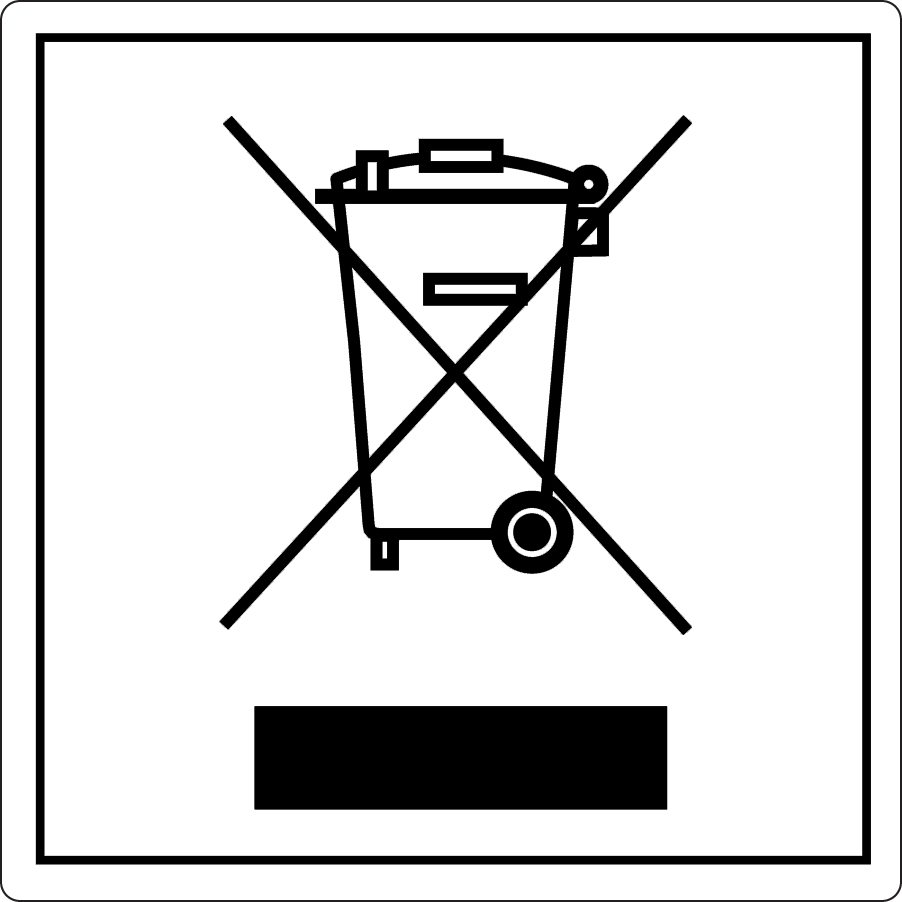
Where Does the WEEE Marking Apply?
The Waste Electrical and Electronic Equipment (WEEE) Directive is the European Community directive 2002/96/EC on waste electrical and electronic equipment which, became European law in February 2003. (Note that this was revised in 2012 and became effective in February 2014 as directive 2012/19/EU to include batteries, cables, and printed wiring boards). The WEEE directive sets collection, recycling, and recovery targets for all types of electrical goods with the purpose of dramatically reducing the number of harmful waste materials that are placed into landfills each year. This problem of increasing amounts of hazardous waste in landfills was (and continues to be) the result of a combination of an ever-increasing number of electronic devices being produced and the decreasing lifespan of these products
What is Included Within WEEE Marking?
WEEE marking labels are mandatory for the following product categories:

- Small IT and telecommunications equipment like tablets, phones, and PCs.
- Small equipment like vacuum cleaners, smoke detectors, clocks, and watches.
- Large equipment like washing machines, dishwashers, copy machines, and rooftop solar panels.
- Equipment containing screens or monitors.
- Temperature exchange equipment like fridges or air conditioners.
- Automatic dispensers of food, beverages, or solid products.
- Toys, leisure, and sports equipment.
- Medical devices like radiology, dialysis, and cardiology equipment.
- Monitoring equipment like smoke detectors and thermostats.
- Lighting equipment including fluorescent and sodium lamps.
- Consumer devices like musical instruments or TVs.
- Photovoltaic panels.
What Responsibilities Does a Manufacturer Have?
From a product manufacturer’s perspective, the WEEE directive is important because it makes it the responsibility of “producers” to assist in the collection, recycling, and recovery of the electronic equipment product’s hazardous materials at the end of its life, as well as providing a take-back service for customers to return their waste free of charge. “Producers” is defined by the directive as the product’s manufacturer, sellers, and distributors. It also requires producers to register their equipment with each respective country’s registers and to file a regular report on the amount of sold electrical and electronic equipment. The WEEE directive obliges all EU member states to transpose its provisions into their national law. As the national transposition of the WEEE directive varies between the member states, a patchwork of requirements and compliance solutions has emerged across Europe.
What Additional Hazards Apply?
While it is important for manufacturers to facilitate the disposal of their WEEE products, it is also crucial to keep in mind the inherent hazards within the disposal process, including:
- Crush and Entanglement Hazards: Some WEEE recycling plants use a wide variety of machinery/equipment as materials are treated including crushing, grinding, conveying, baling, compacting, and palletizing machines.
- Musculoskeletal Disorders: From manual handling of heavy large WEEE items with improper technique.
- Upper Limb Disorders: From repetitive movements to remove wiring looms or other components.
- Cuts and Abrasion Risks: From the use of items like knives used to remove anti-break coatings on fluorescent lamps, sharp edges on items as they are being dismantled or broken.
- Stacking WEEE Items: – White goods (stability of stacks should be no more than three times the height of the minimum base dimension as a rule of thumb)
- Electrical Safety: In particular, if any element of refurbishment is being carried out consider electrical testing issues.
- Fire and Explosion Risks: Hydrocarbons and ammonia in fridges and freezers; polystyrene (can be found in fridges/freezers as an insulator and is commonly used packaging material. The pentane within the polystyrene is flammable); batteries (removed batteries from WEEE products should be stored in appropriately labeled containers having due regard to the potential fire risk they can present).
How to Implement WEEE Directives
The WEEE and RoHS directives both make sense from a social responsibility point of view. Hazardous materials need to be disposed of properly to limit environmental pollution as much as possible. But the actual logistics of accomplishing the task of ensuring the proper disposal of electrical component parts after they leave the hands of producers take an immense amount of planning. Clarion Safety’s role in this process is that we can supply you with the mark in the form of a label that you must use on your products (and components) that fall under the WEEE directive. This mark is very specific; it consists of an image of a crossed-out trash bin – a black graphic on a white background. It visually indicates to the owner of your product that it cannot be discarded for a curbside pickup but instead must be turned in for environmentally sound disposal. The label can be printed on your product’s packaging, instructions, or warranty leaflet only if the product’s size is too small or function will be affected by the marking. We routinely customize WEEE labels to incorporate the company’s name and the date the product was manufactured. We carry standardized labels in a variety of sizes and use the best in labeling materials to help assure that these important identifiers don’t fall off, peel up, fade or fail during the course of your product’s useful life.

